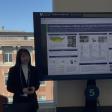The Ho lab constitutes an interdisciplinary team of scientists and researchers, and an interprofessional team of clinicians. As a team, the lab solves problems related to biominerals and biomechanics.
Team science is fundamental to the Ho Lab. The laboratory uses an interdisciplinary approach to address unmet clinical challenges by synchronizing basic science with clinical needs. Members of the team work in close partnership with clinicians in Schools of Dentistry and Medicine. Clinical significance is guided by translation insights through research on specimens from humans and in vivo animal models.
Most team members are guest scientists at various imaging facilities including the Molecular Foundry and the Advanced Light Source at the Lawrence Berkeley National Laboratory, and the Stanford Linear Accelerator Center. All team members are a part and parcel of the Biomaterials and Bioengineering Correlative Microscopy Core (BBCMC), School of Dentistry at UCSF.
Biomechanics: is the study of form and function of biological systems at multiple length scales including macrometer sized organs, millimeter thick tissues, and micrometer cells. Examples include the tooth inside an alveolar socket forming a dentoalveolar joint (DAJ), and the temporomandibular joint (TMJ, jaw joint).
Biominerals: include mineral deposits in unwanted locations of the human body. Examples include dental calculus and salivary stones in the mouth, stones in the kidney and the prostate, calcification of the ligaments, cartilage and blood vessels.

